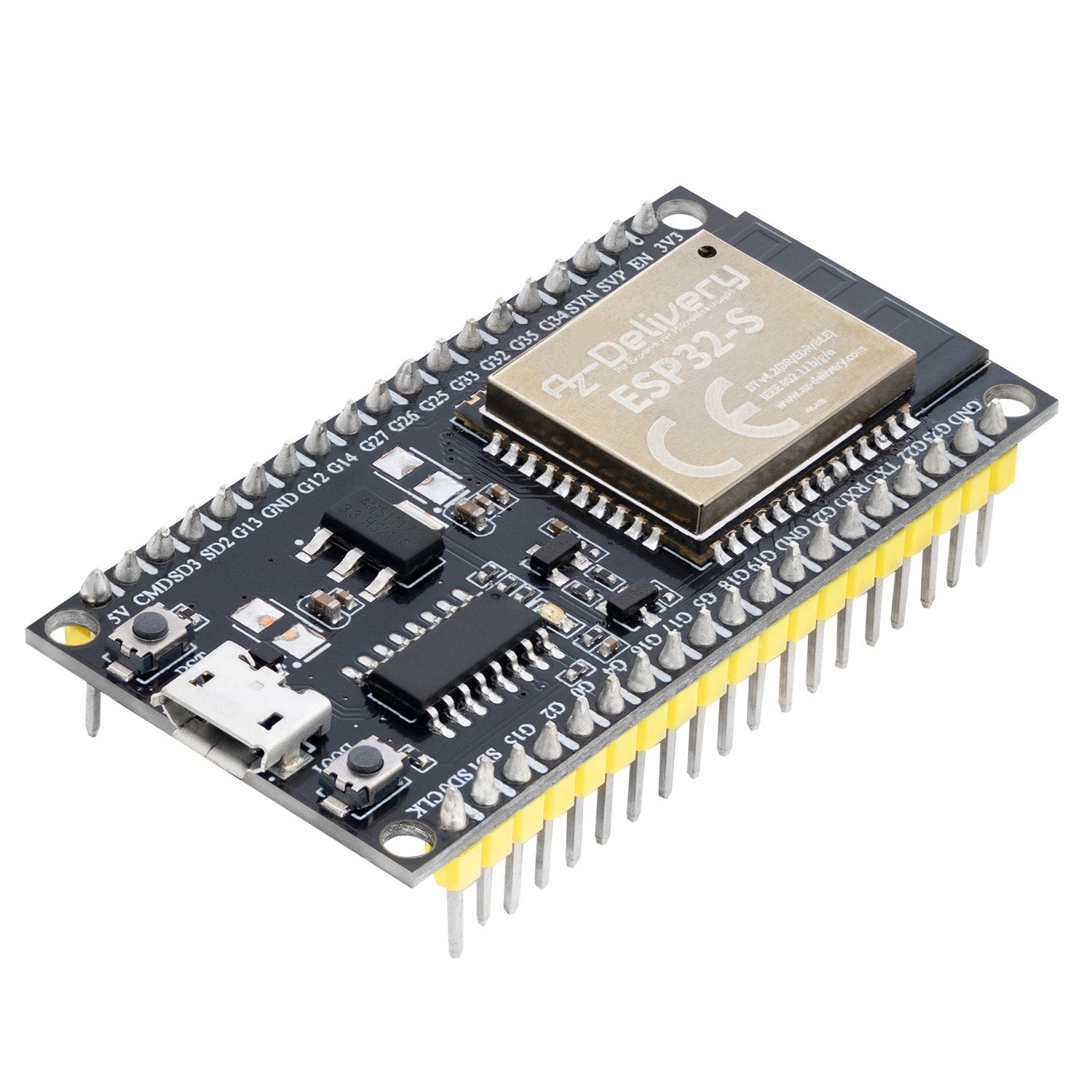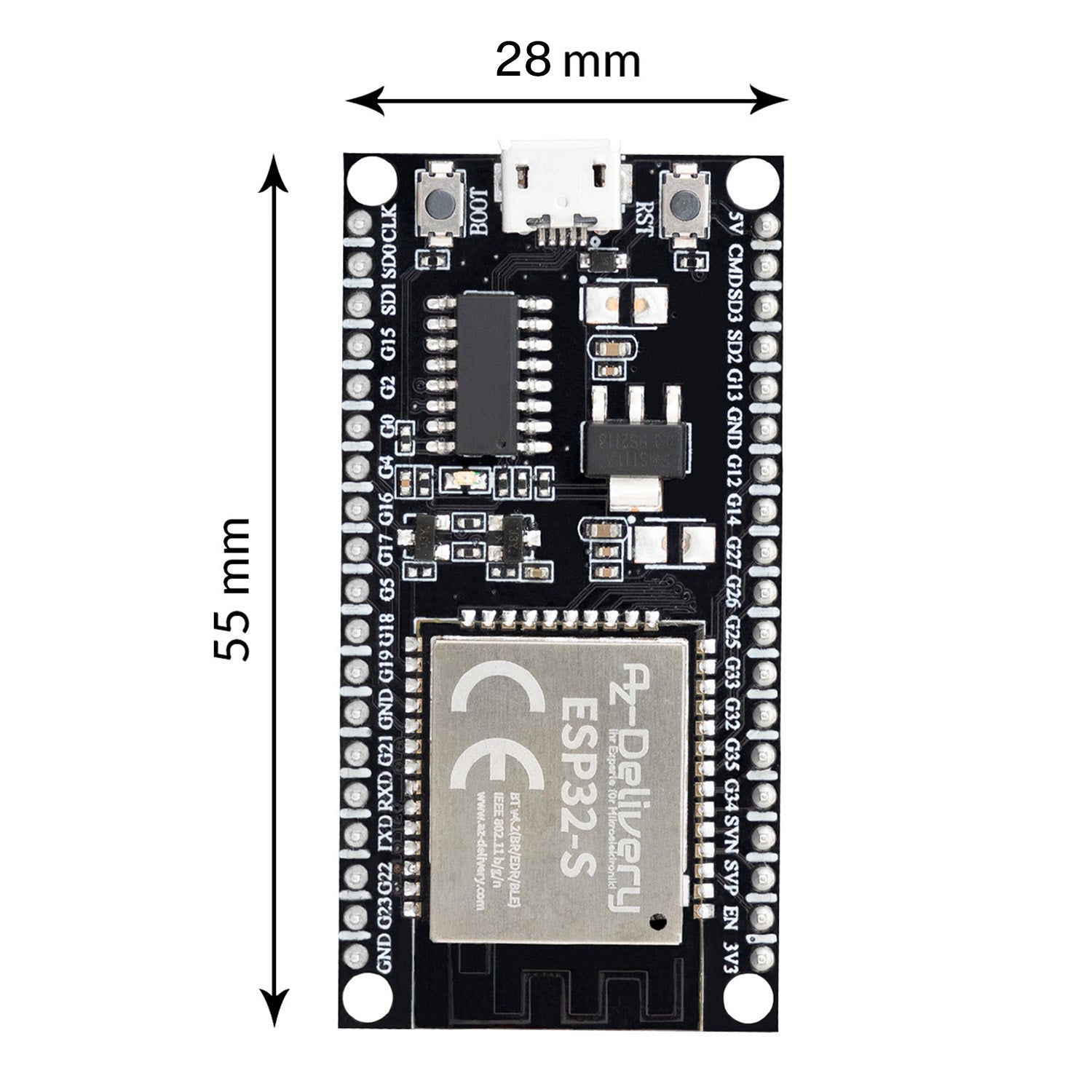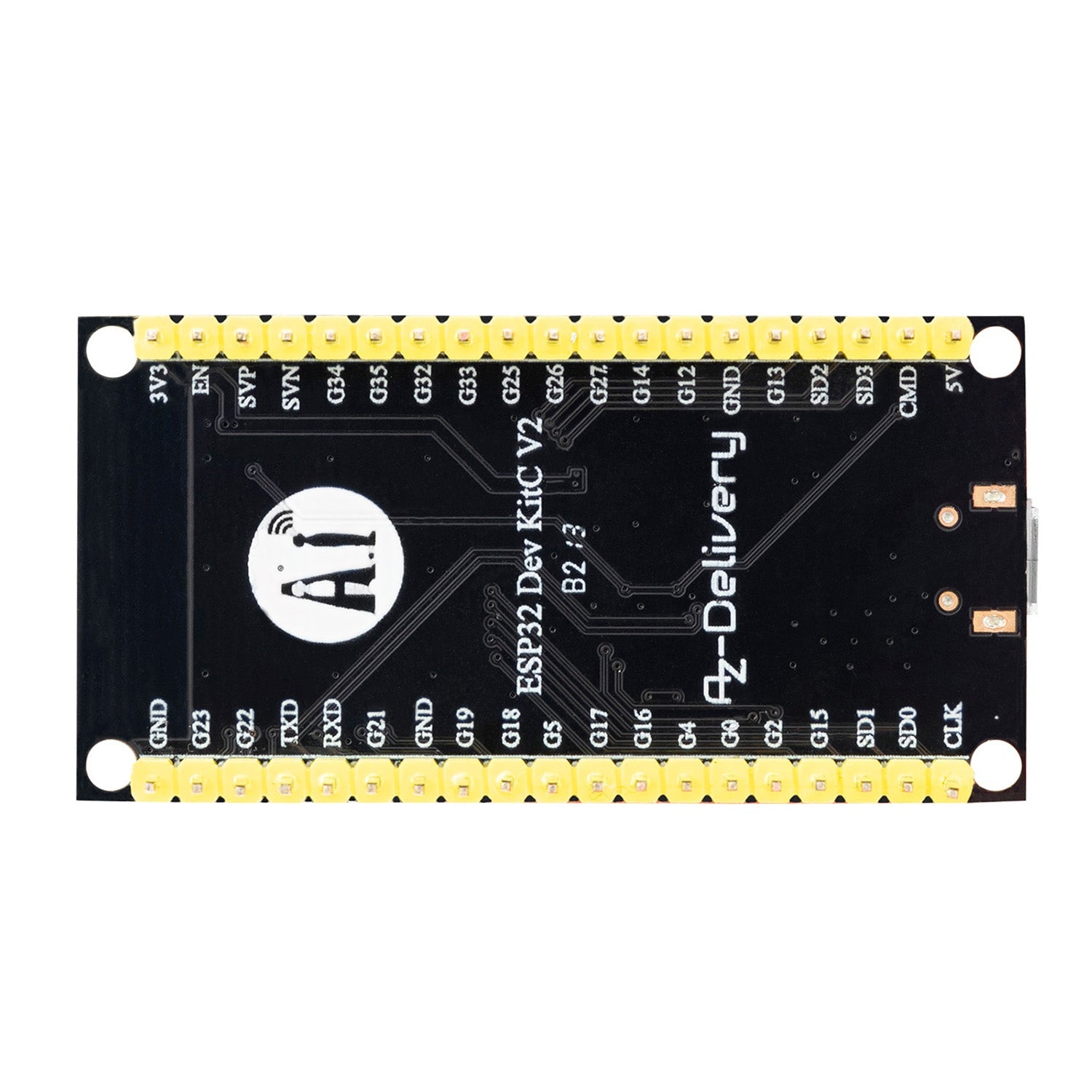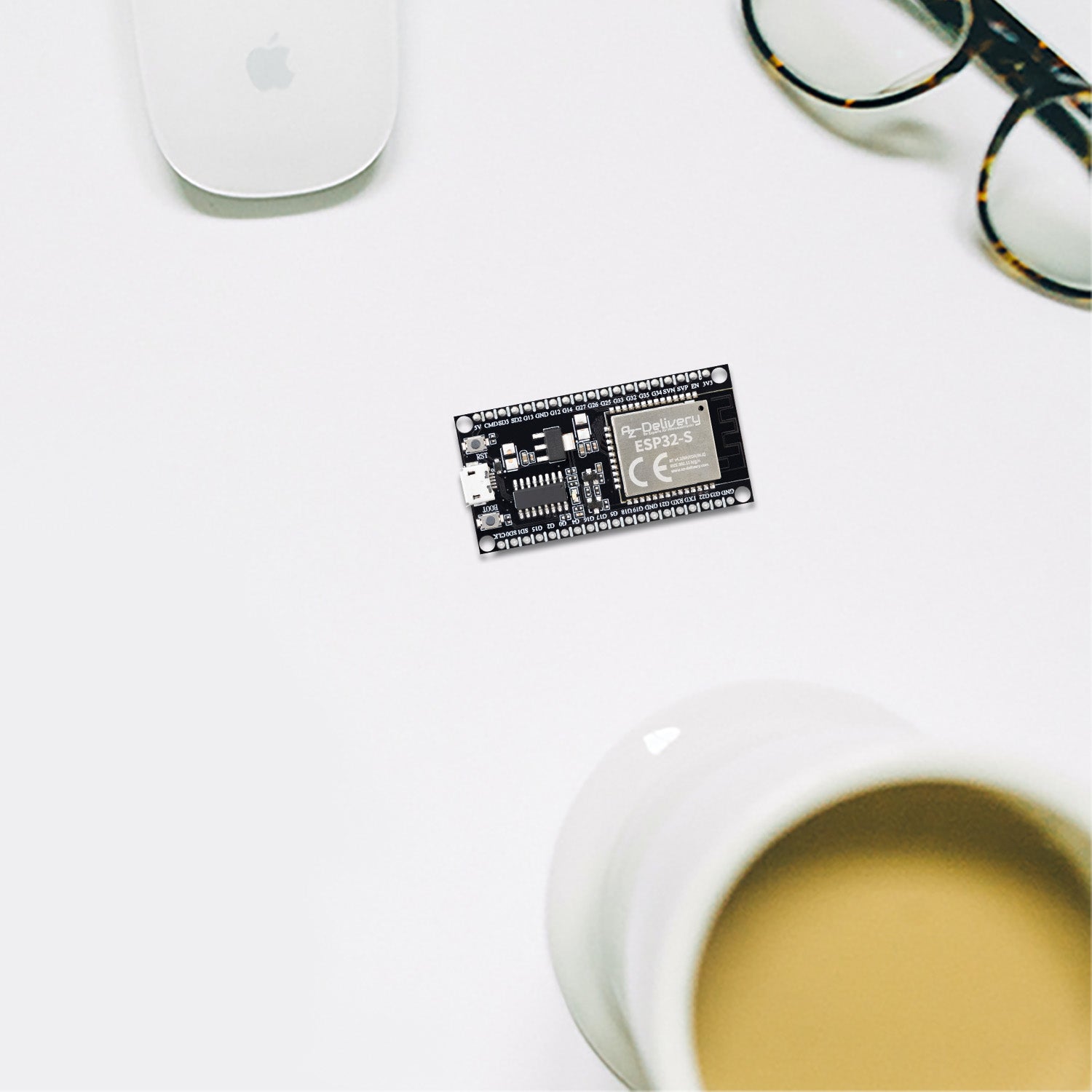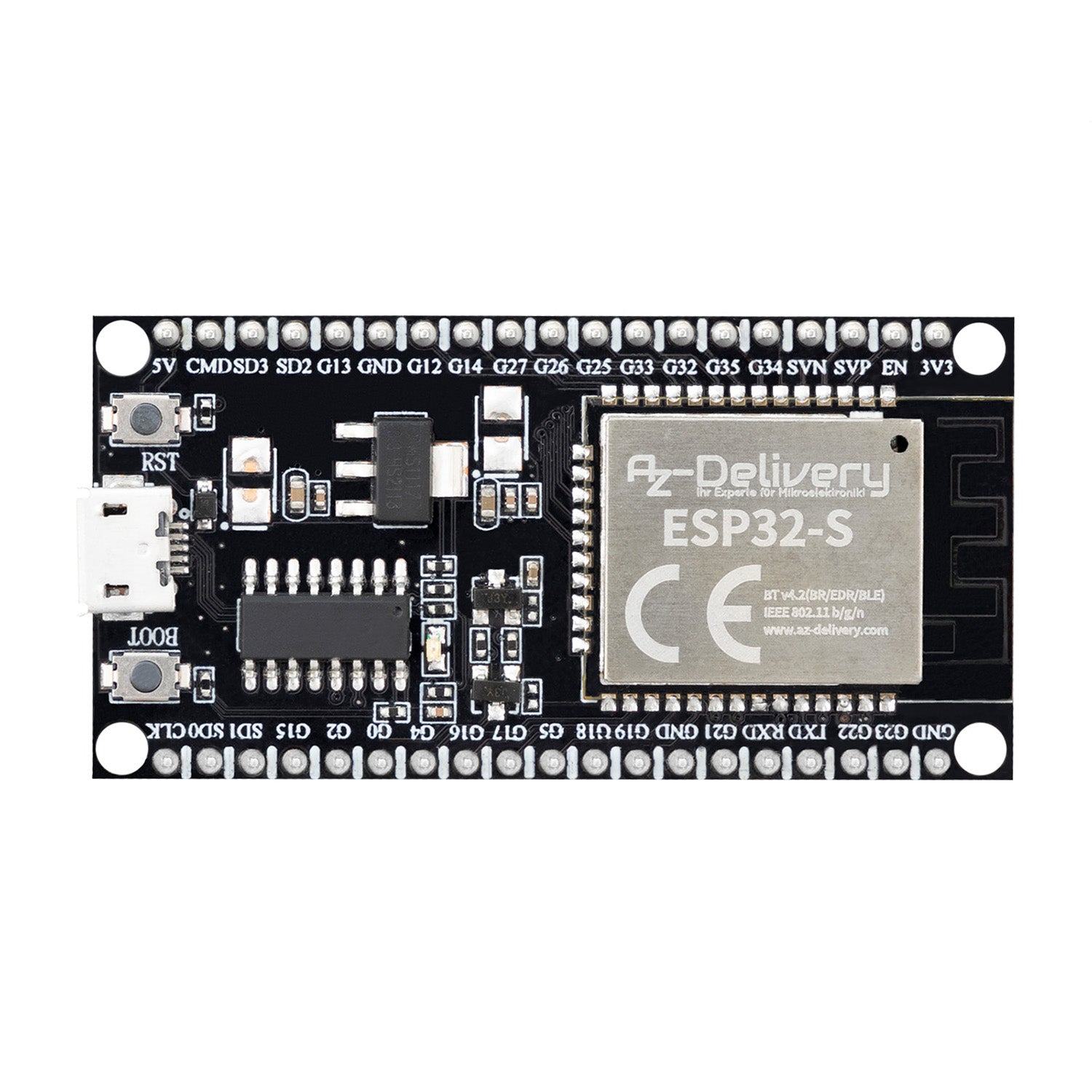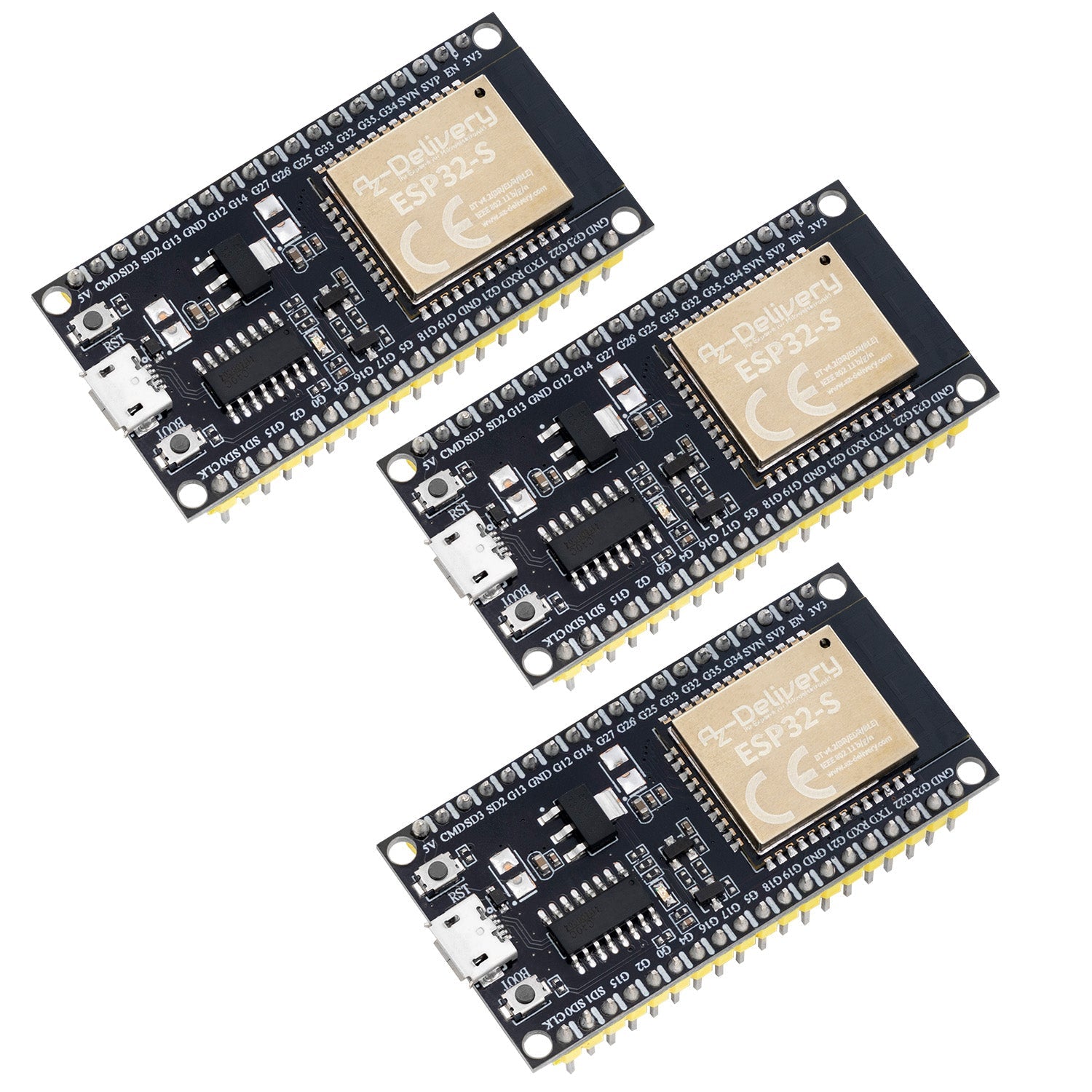Description
The AZ-Delivery ESP32S Dev Kit C was designed by AI-Thinker to provide an easy introduction to programming the new ESP32 dual core processor. With a host of new sensors and functions, this board represents the next step in IoT development.
Compared to our alternative ESP32 Dev Kit version the ESP32 chip used here is a newer revision (Rev. 3). In addition, this board has the high-quality USB serial chip CH340 and even higher demands were made on the quality of the processing of the board.

Special features
- As with the predecessor model ESP8266, the WLAN functionality is implemented directly in the SoC, but with additional Bluetooth function (incl. BLE).
- Support for simultaneous charging and transfer of data. The ESP32 processor used combines a CPU with 2 Tensilica LX6 cores, clocked at up to 240 MHz, and 512 kilobytes of SRAM in a single microcontroller chip.n
- It also integrates a radio unit for WLAN (according to 802.11bgn) and Bluetooth (Classic and LE).
Technical details:
| Power supply voltage (USB) | 5 V |
| Input/output voltage | 3.3 V |
| Required operating current | min. 500 mA |
| SoC | ESP32S |
| Clock frequency range | 80 MHz / 240 MHz |
| RAM | 512 kB |
| External flash memory | 4 MB |
| I/O pins | 34 |
| Interfaces | SPI, I2C, I2S, CAN, UART |
| Wi-Fi protocols | 802.11 b/g/n (802.11n up to 150 Mbps) |
| Wi-Fi frequency | 2.4 GHz - 2.5 GHz |
| Bluetooth | V4.2 - BLE and Classic Bluetooth |
| Wireless antenna | PCB |
| Dimensions | 56 x 28 x 13 mm |

WLAN function
The WLAN function supports all common encryption methods such as WPA2. It can also act as an access point or sniffer in passive mode in the WLAN.

Quick Start Guide
We offer an extensive e-book library, regular blog posts with exciting projects, and an active customer community.
